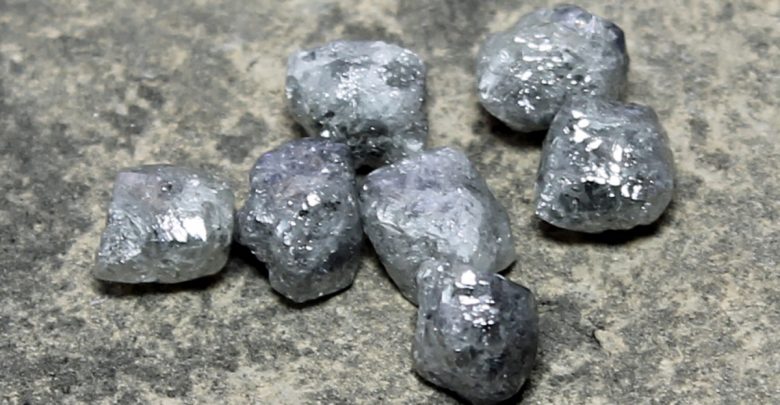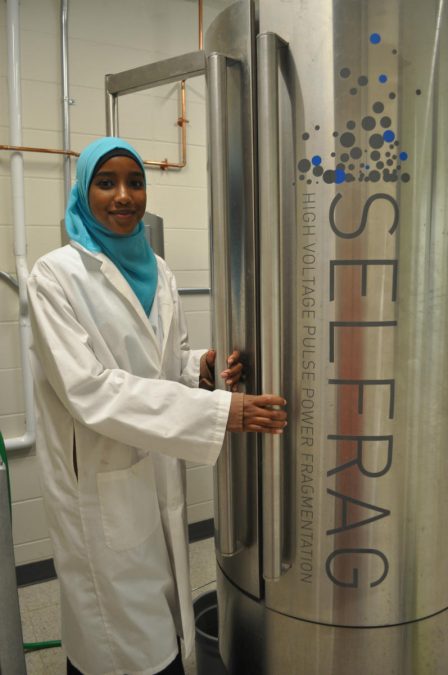 Supplied
SuppliedA new, more effective way of harvesting diamonds was discovered by a high school student at the University of Alberta over the summer.

Grade 11 student Hamdi Ali spent her summer at the U of A conducting research at the department of earth and atmospheric sciences geology labs. Ali was a participant in the Women in Scholarship, Engineering, Science, and Technology (WISEST) Summer Research Program when she made the discovery.
Diamonds are normally harvested by crushing rocks and sifting through the debris to find unblemished ones. Ali was able to experiment and pilot the use of a new tool called the SELFRAG lab system. The system is able to electronically separate diamonds to produce less waste and not damage the diamonds as much in the process.
Ali conducted her study under the supervision of Graham Pearson, a science professor and mantle geochemist, and Margo Regier, a graduate student studying geology and diamond-related research. Pearson said Ali surprised researchers by how effective the new machine was. He added that he was happy to see the progress Ali was able to make in such a short period of study.
“Science is about the joy of discovery. Doing something nobody has ever done before and finding things that nobody has ever seen before,” Pearson said. “Even in a short period, [students] can do research that is new, that makes a difference, that people are interested in — and it opens students’ eyes to the diversity and gender equality that exists in modern large research groups.”
Last month, Ali and the team travelled to the Northwest Territories to share the findings of the study at the Yellowknife Geoscience Forum. At the three-day event, Ali was able to present her study to industry and scientists.
“This was my first foray into research, and while my results seemed promising, I didn’t know just how relatively extraordinary they were,” Ali said. “It was only later on, as I was presenting my results to representatives from De Beers and saw their excitement firsthand, that I fully realized that my work had real-life applications.”
Regier said it was a “fun time” working with Ali in the lab. She added that Ali brought a level of enthusiasm to the project that made it even more of a worthwhile project.
“To introduce someone to the research process was really enjoyable,” Regier said. “To have someone new in the lab who enjoys every moment… is really invigorating.”
Ali has applied to the U of A and other post-secondary institutions in Canada. She hopes to continue to pursue science as a field of study.
Regier hopes this study inspires others interested in pursuing science to seriously consider it.
“People often think you need to have a PhD to uncover important things,” Regier said. “I think that science can be done by anyone, as Ali’s study goes to show.”




